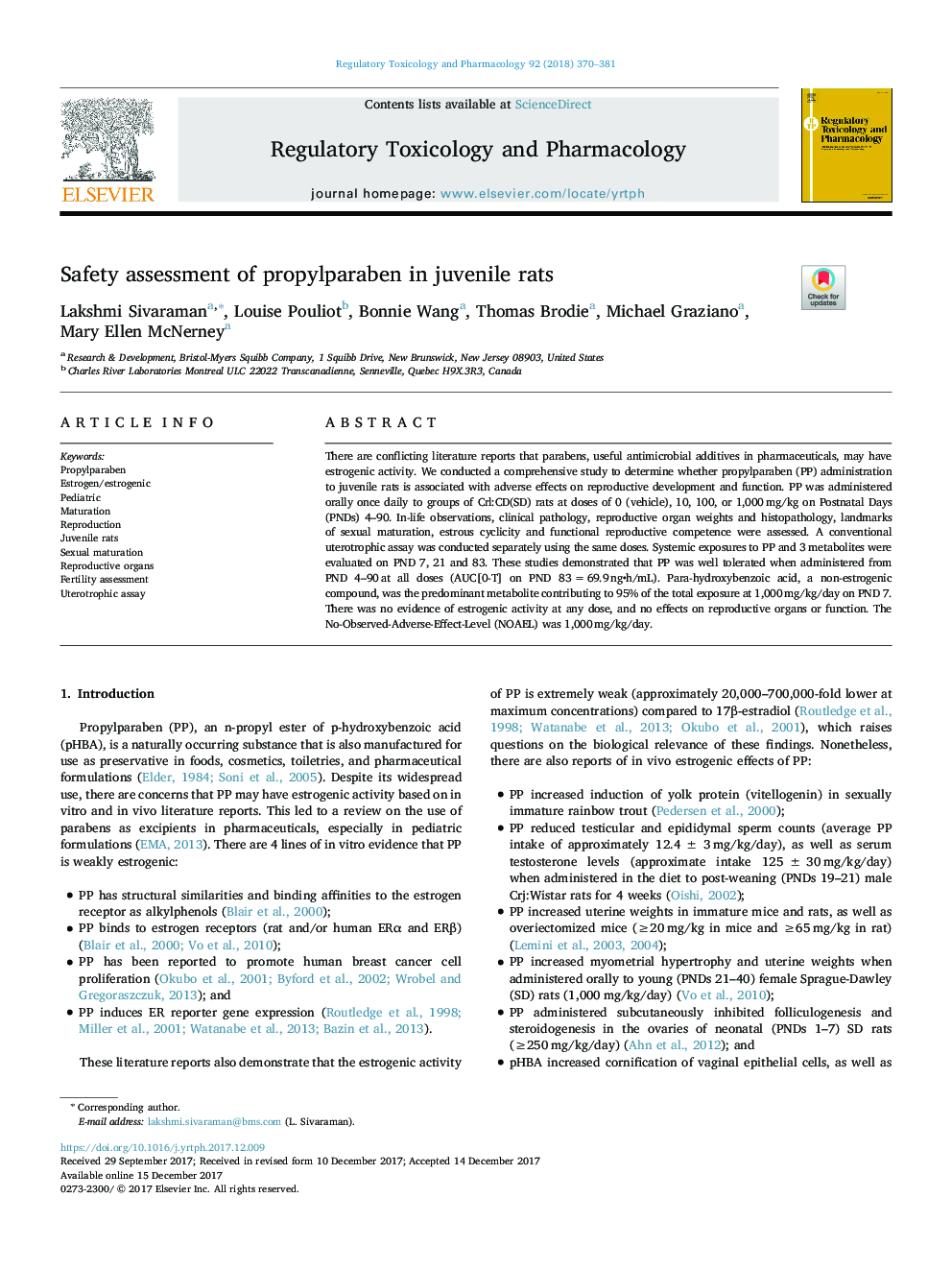| Article ID | Journal | Published Year | Pages | File Type |
|---|---|---|---|---|
| 8551746 | Regulatory Toxicology and Pharmacology | 2018 | 12 Pages |
Abstract
There are conflicting literature reports that parabens, useful antimicrobial additives in pharmaceuticals, may have estrogenic activity. We conducted a comprehensive study to determine whether propylparaben (PP) administration to juvenile rats is associated with adverse effects on reproductive development and function. PP was administered orally once daily to groups of Crl:CD(SD) rats at doses of 0 (vehicle), 10, 100, or 1,000â¯mg/kg on Postnatal Days (PNDs) 4-90. In-life observations, clinical pathology, reproductive organ weights and histopathology, landmarks of sexual maturation, estrous cyclicity and functional reproductive competence were assessed. A conventional uterotrophic assay was conducted separately using the same doses. Systemic exposures to PP and 3 metabolites were evaluated on PND 7, 21 and 83. These studies demonstrated that PP was well tolerated when administered from PND 4-90â¯at all doses (AUC[0-T] on PND 83â¯=â¯69.9â¯ng
- h/mL). Para-hydroxybenzoic acid, a non-estrogenic compound, was the predominant metabolite contributing to 95% of the total exposure at 1,000â¯mg/kg/day on PND 7. There was no evidence of estrogenic activity at any dose, and no effects on reproductive organs or function. The No-Observed-Adverse-Effect-Level (NOAEL) was 1,000â¯mg/kg/day.
- h/mL). Para-hydroxybenzoic acid, a non-estrogenic compound, was the predominant metabolite contributing to 95% of the total exposure at 1,000â¯mg/kg/day on PND 7. There was no evidence of estrogenic activity at any dose, and no effects on reproductive organs or function. The No-Observed-Adverse-Effect-Level (NOAEL) was 1,000â¯mg/kg/day.
Keywords
Related Topics
Life Sciences
Environmental Science
Health, Toxicology and Mutagenesis
Authors
Lakshmi Sivaraman, Louise Pouliot, Bonnie Wang, Thomas Brodie, Michael Graziano, Mary Ellen McNerney,
